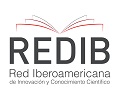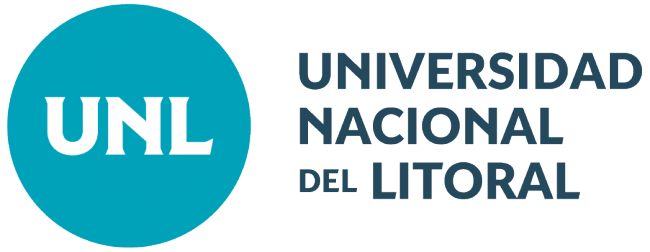Human intervention in dairy kids weaning process: physiological parameters and animal behavior
DOI:
https://doi.org/10.14409/favecv.v17i2.7747Keywords:
type of breeding, behavioural response, physiological parameters, leukogram, goatsAbstract
Human intervention in breeding and rearing processes may have different impact in animals related to the type, moment and duration. The aim of the study was to evaluate if there are changes in physiological, blood and behavioral parameters in Saanen kids according to type of type of breeding, 10 raised with their mothers (CT) vs. 10 artificially reared (CA), in pre-weaning and post-weaning stages. Heart rate (HR), rectal temperature (TR), respiratory frequency (FR), predisposition to be caught and kicking attitude were measure once a week. Prevously, 10 ml of blood was collected for leukogram determination. Experimental design was repeated measurements in CRD. Data were analyzed by InfoStat program. Neither between periods nor between treatments were significant differences detected for HR as TR. CT animals were more difficult to catch in both periods (pre-weaning: p <0.0001, post-weaning: p <0.0020). In pre-weaning stage the number of animals that kicked was higher (p <0.05) in CT, whereas during rearing period there were no differences. During pre-weaning, neutrophil counts of the CT group were higher (p <0.0001) and lymphocytes lower (p <0.0001) than in rearing stage. During rearing differences were found (p <0.0001) between groups and the neutrophil / lymphocyte ratio was higher (p <0.0001) by 50% in the TC. It is possible to conclude that although animals can become stressed when caught; contact with humans in early stages allows increasing the level of docility and, at the same time, facility the execution of routine tasks.
References
Álvarez E. 2002. Efecto de estímulos de diferente intensidad durante el arreo sobre algunas variables sanguíneas indicadoras de estrés en bovinos. Memoria de Título presentada como parte de los requisitos para optar al TÍTULO DE MÉDICO VETERINARIO. Escuela de Medicina Veterinaria, Universidad Austral de Chile.
Bergamasco, L., Macchi, E., Facello, C., Badino, P., Odore, R., Pagliasso, S., Bellino, C., Osella, M.C., Re, G., 2005. Effects of brief maternal separation in kids on neurohormanol and electro-encephalographic parameters. Appl. Anim. Behav. Sci. 93: 39–52.
Breuer K, Hemsworth PH, Barnetta JL, MatthewsC LR, Colemand GJ. 2000. Behavioural response to humans and the productivity of commercial dairy cows. Appl. Anim. Behav. Sci. 66:273–288.
Boissy A. 1995. Fear and fearfulness in animals. Q. Rev. Biol. 70: 165-191.
Boivin X, Le Neindre P, Chupin JM. 1992. Establishment of cattle-human relationships. Appl. Anim. Behav. Sci., 32: 325-335.
Caballero S, Sumano H. 1993. Caracterización del estrés en bovinos. Arch. Med. Vet. 25: 15-29.
Craig JV, Adams AW. 1984. Behaviour and well-being of hens (Gallus domesticus) in alternative housing environments. World's Worlds Poult. Sci. J. 40: 221-240.
Gray JA. 1990. Brain Systems that Mediate both Emotion and Cognition. Cogn. Emot. 4: 269-288.
Hanna D, Sneddon IA, Beattie VE. 2009. The relationship between the stockperson's personality and attitudes and the productivity of dairy cows. Animal 3: 737-43.
Hemsworth PH. 2003. Human-animal interactions in livestock production. Appl. Anim. Behav. Sci. 81: 185-198.
Hemsworth PH, Coleman GJ. 1998. Human-livestock interactions: the stockperson and the productivity and welfare of intensively farmed animals. London, CAB International. 140pp
Jones RB. 1996. Fear and adaptability in poultry: insights, implications and imperatives. World's Worlds Poult. Sci. J. 52: 131-174.
Le Neindre P, Boivin X, Boissy A. 1996. Handling of extensively kept animals. Appl. Anim. Behav. Sci. 49: 73-81.
Lyons DM, Price EO. 1987. Relationships between heart rates and behaviour of goats in encounters with people Appl. Anim. Behav. Sci. 18: 363-369.
Lyons DM, Price EO, Moberg GP. 1988. Individual differences in temperament of domestic goats: consistency and change. Animal Behav. 36: 1323-1333.
Lyons DM. 1989. Individual differences in temperament of dairy goats and the inhibition of milk ejection. Appl. Anim. Behav. Sci. 22: 269-282.
Martínez GM, Suárez VH, Ghezzi MD. 2016. Impacto de la relación humano-animal en la productividad y el bienestar animal de los rodeos lecheros. Rev. Arg. Prod. Ani. 36: 75-82.
Miranda-de la Lama GC, Matiiello S. 2010. The importance of social behaviour for goat welfare in livestock farming. Small Rum. Res. 90: 1-10.
Newberry RC, Swanson JC. 2008. Implications of breaking mother–young social bonds. Appl. Anim. Behav. Sci. 110: 3-23.
Piccione G, Refinetti R. 2003. Thermal chronobiology of domestic animals. Front. Biosci. 8: 258-264.
Raggi SL, Boza LJ. 1986. Constantes fisiológicas de la cabra. Monografías de Medicina Veterinaria 8 (Universidad de Chile). En línea: https://monografiasveterinaria.uchile.cl/index.php/MMV/article/view/4871.
Tadich N, Gallo C, Alvarado M. 2000. Efectos de 36 horas de transporte terrestre con y sin descanso sobre algunas variables sanguíneas indicadoras de estrés en bovinos. Arch. Med. Vet. 32: 171-183.
Waiblinger S, Boivinb X, Pedersenc V, Tosid MN, Janczake AM, Visserf EK, Jonesg RB. 2006. Assessing the human–animal relationship in farmed species: A critical review. Appl. Anim. Behav. Sci. 101: 185-242.
Yagi Y, Shiono H, Chikayama Y, Ohnuma A, Nakamura Y, Yayou K. 2004. Transport stress increases somatics cell counts in milk, and enhances the migration capacity of peripheral blood netrophils of dairy cows. J. Vet. Med. Sci. 66: 381-387.
Zulkifli I. 2013. Review of human-animal interactions and their impact on animal productivity and welfare. J. Anim. Sci. Biotechnol. 4:25.
Downloads
Published
How to Cite
Issue
Section
License
FAVE Sección Ciencias Veterinarias ratifies the open access model, in which contents (in full) are available free to anyone in the internet. The costs of production and publication are not transfered to the authors. This policy intends to break social and economical barriers that generate inequities in the access to information, and for the publication of research results.
All articles can be accessed at http://bibliotecavirtual.unl.edu.ar/publicaciones/index.php/FAVEveterinaria/issue/current/, under license Creative CommonsAtribución-NoComercial-Compartir Igual 4.0 Internacional.










